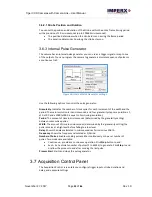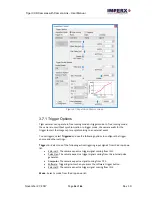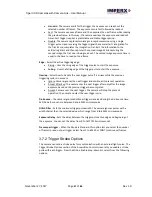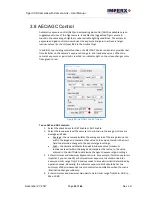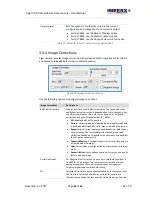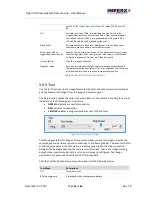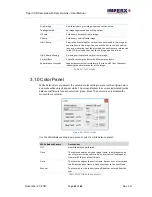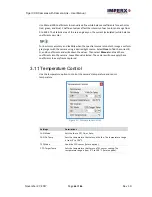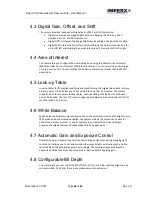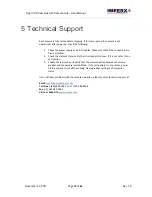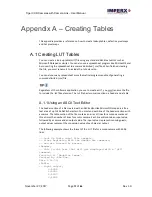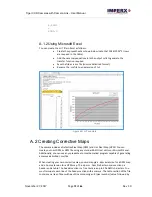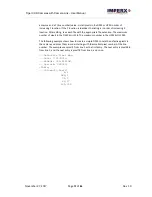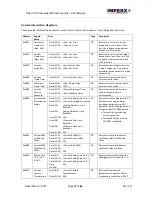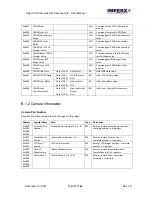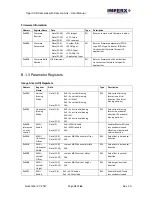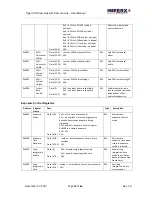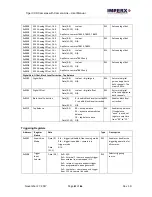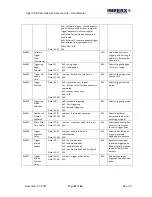
Tiger CCD Cameras with Camera Link
– User Manual
November 27, 2017
Page
67
of
86
Rev 1.0
4 Camera Features
4.1 Bad Pixel Correction
Defective pixels have a sensitivity that deviates more than 15% from neighboring pixels
due to fluctuations in the CCD manufacturing process. A defective pixel with sensitivity
lower than neighboring pixels is described as dark. A defective pixel with sensitivity higher
than adjacent pixels is described as bright.
Hot pixels are single pixel defects that are brighter than the surrounding pixels and
therefore easily seen by the user. Hot pixels result from minor flaws in the manufacturing
process or from miniscule contaminants introduced during the image sensor
manufacturing process.
Hot pixels vary in their intensity and characteristics, but all hot pixels have one common
characteristic: their intensity increases dramatically with temperature. A hot pixel can
double in brightness with temperature increases as small as 6 degrees Centigrade. The
wide variety of hot pixel types and the wide degree of variability of hot pixel intensity
characteristics makes it difficult for the camera manufacturer to effectively predict and
correct all hot pixels. For this reason, Imperx developed dynamic hot pixel correction. The
camera performs dynamic hot pixel correction by examining the image output in real-time
and identifying pixels that are brighter than surrounding pixels based on a user-defined
threshold. The defined threshold gives you control of the correction process, so you can
decide what level of hot pixel brightness is unacceptable.
One caution, if you set the dynamic hot pixel threshold too small, random shot noise in a
pixel may implement an unwanted correction.
4.2 FFC Correction
Each pixel within a CCD array has unique light sensitivity characteristics that cause
deviation in the pixel’s response to illumination.
Most of the deviation is due to the
difference in the angle of incidence and to charge transport artifacts creating an effect
called shading. During factory final testing, Imperx engineers run a program specially
designed to identify the shading characteristics of the camera. The program creates a Flat
Field Correction (FFC) file containing coefficients describing these shading characteristics.
This file is downloaded into the camera’s non
-volatile memory.
When Flat Field Correction is enabled, the camera uses the Flat Field Correction
coefficients to compensate for the shading effect. The camera supports two FFC tables.
The factory creates and preloads one of the tables. Users can create a second FFC table.



